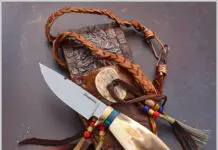Learning to play an instrument is, arguably, one of the most rewarding hobbies to take part in. Studying and perfecting a new skill over time, especially one that produces music, is a popular pastime for a reason. Drums, often considered the backbone of music, require a completely different skill set to something like the guitar or piano.
“Drumming is a great combination of both mental and physical performance,” says Scott Rouse, owner of Tulsa Drum Lessons.
Although the skill for drumming is partly innate, Rouse believes anyone can learn to play.
“Establishing the necessary coordination and listening skill to be a ‘musical’ drummer takes a lot of repetition,” he says. “This is where an inherent sense of timing and coordination could help, though the discipline of regular practice and playing remains more important. Ultimately, the skills needed to play drums are similar to learning any instrument; patience and persistence.”
Lessons are another obvious key element for learning to play drums. Plenty of people are self-taught or use online videos, but there’s often a ceiling with that method – which is when in-person lessons come into play.
“Working with a teacher versus online tutorials is good for accountability and making sure that you’re not establishing bad habits,” says Rouse. Fundamentals and making sure injuries aren’t going to occur are especially important.

“Like any instrument, the goal is independence between two hands,” says Jim Korakis, owner of Good Life Music & Media Lessons in Tulsa. “For the drum set, coordination is required between both hands and both feet, and then between hands and feet separately.”
Rouse agrees, and says he prefers his lessons be tailored to the individual.
“My goal as a teacher is to bring out my students’ personality on the instrument. That means the path of learning will always be unique,” he says. “While I focus on fundamentals and building a strong foundation, I always want my lessons to reinforce my students’ love of music first. I will also work to teach them skills to be part of the music, as a performer, on a deeper level. Playing to music, especially with other live musicians, is really where the magic is.”
Imagining a tune without a certain instrument makes it feel incomplete in a way that seems glaring. This is often most noticeable with the drums.
“When music requires drums, I think the drums often set the tone and can really make the piece,” says Rouse. “Look at the way most recording studios, when tracking traditional bands, start with the drums. This is the foundation. Rhythm is movement. Music can be lifted by this movement and drummers are the cohesive element of the band leading that movement,” he continues.
Korakis agrees wholeheartedly.
“Drums are the heartbeat of music,” he says. “At his Skywalker Sound studio, the great George Lucas has a saying: ‘Sound and music are 50% of the cinematic experience.’ Drums and rhythm play a massive part in that.”






















